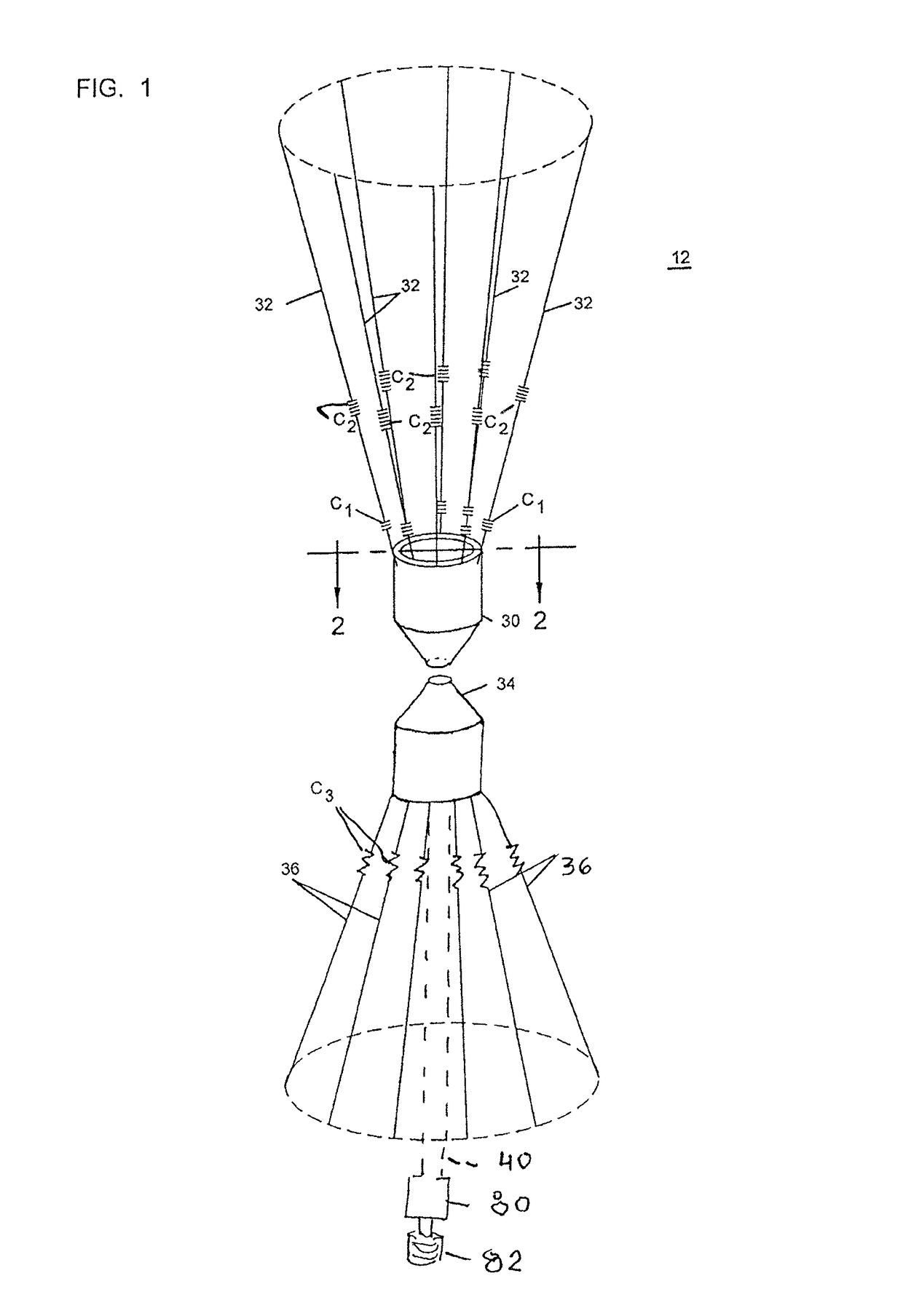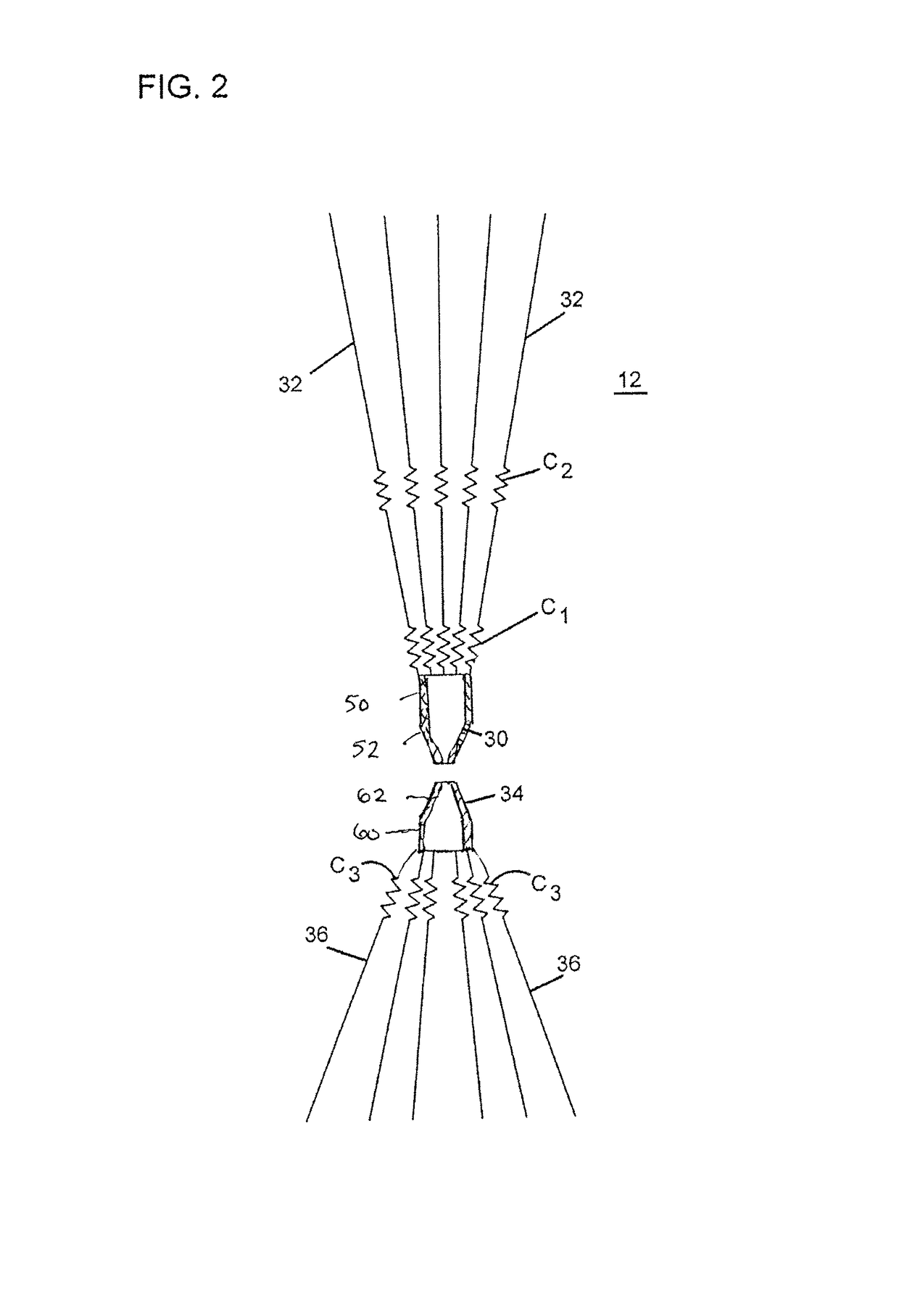Biconical antenna assembly with balun feed
a biconical antenna and balun feed technology, applied in the direction of antenna earthing switch association, antenna horn, radiating element housing, etc., can solve the problems of short range wireless device posing significant risk to a combatant, unintended use in supporting military or terrorist activities of non-friendly countries, and a significant risk to combatants. , the risk of detection or risk of injury from the ied itsel
- Summary
- Abstract
- Description
- Claims
- Application Information
AI Technical Summary
Benefits of technology
Problems solved by technology
Method used
Image
Examples
Embodiment Construction
[0032]Referring to FIG. 1, antenna 12 includes an upper portion having a first sheet conductor 30 with a plurality of conductively attached radiating wire conductors 32 aligned and held into a conical shape. The lower portion of antenna 12 includes a second sheet conductor 34 with a number of flexible radiating wire conductors 36 conductively attached and formed into a partial conical shape. Radiating wire conductors 36 of the lower portion of antenna 12 are spaced over approximately 180 degrees. Sheet conductors 30, 34 are thin sheet metal formed into illustrated shapes. Additional details of radiating wire conductors 32, 36 are disclosed in Applicant's U.S. Pat. No. 8,059,050, incorporated herein by reference.
[0033]Referring to FIG. 2, first sheet conductor 30 includes a generally cylindrical sheet element 50 positioned atop a generally cone-shaped sheet element 52. Sheet conductor 30 may be formed of thin metal elements which are soldered or welded together. Similarly, second she...
PUM
 Login to View More
Login to View More Abstract
Description
Claims
Application Information
 Login to View More
Login to View More - R&D
- Intellectual Property
- Life Sciences
- Materials
- Tech Scout
- Unparalleled Data Quality
- Higher Quality Content
- 60% Fewer Hallucinations
Browse by: Latest US Patents, China's latest patents, Technical Efficacy Thesaurus, Application Domain, Technology Topic, Popular Technical Reports.
© 2025 PatSnap. All rights reserved.Legal|Privacy policy|Modern Slavery Act Transparency Statement|Sitemap|About US| Contact US: help@patsnap.com



